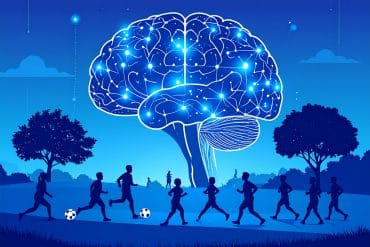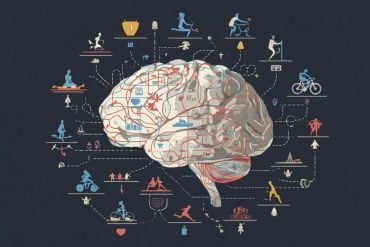Summary: Toddlers on the autism spectrum who pay less attention to “motherese”, or baby-talk, exhibited weaker social and language skills in later tests.
Source: UCSD
We all do it: that high-pitched, sing-songy voice that spills out of your mouth whenever a baby is around. Caregivers have long used this playful, emotional, exaggerated form of speech—called “motherese”—to capture their children’s attention. Now, scientists may be able to use it to diagnose autism spectrum disorder (ASD).
In a study published February 8, 2023 in JAMA Network Open, researchers at University of California San Diego School of Medicine have developed a new eye-tracking test to quantify toddlers’ level of attention to motherese. Using these measurements, the scientists were able to reliably identify a subset of toddlers with ASD, whose low levels of attention to motherese were also associated with weaker social and language abilities.
Studies have shown that motherese speech stimulates children’s attention and learning, helping them develop language skills and emotional reactivity. If toddlers with ASD do not pay as much attention to this speech style, this might affect their social skills later in life. The eye-tracking test could thus be beneficial for early ASD screening, diagnosis and prognosis, and help clinicians identify which treatments would be most useful for the child.
“We know the earlier we can introduce treatment, the more effective it is likely to be, but most children don’t get a formal diagnosis until around age 3 or 4,” said corresponding author Karen Pierce, Ph.D., professor of neurosciences at UC San Diego School of Medicine and co-director of the UC San Diego Autism Center of Excellence. “There is a real need for easy and effective diagnostic tools that can be used on young children, and eye-tracking is a great place to start.”
The study surveyed a group of 653 toddlers, age 1 to 2 years old, with and without an ASD diagnosis. In the experiment, each child was presented with two videos on a screen: one of a woman speaking in motherese, and one non-human scene (either a busy highway or a movie of abstract shapes and numbers with accompanying electronic music). The videos were available for one minute, and the toddlers used their eyes to control which video played at a given time.

Toddlers without ASD showed consistently high interest in motherese, spending approximately 80 percent of the experiment watching that video. But results were not as uniform in toddlers diagnosed with ASD; their fixation levels spanned the full range from 0 to 100 percent of the experimental time.
The subset of toddlers who fixated on motherese less than 30 percent of the time could be accurately identified as having ASD through this measurement alone. These children also showed lower scores on subsequent tests of language and social skills.
Toddlers who had ASD but still spent a majority of the time attending to motherese displayed greater social and language abilities, highlighting the diversity within the ASD population.
Whether less attention to motherese is the cause of these childrens’ reduced sociability or merely a symptom of it has yet to be determined, the authors note, but in either case, it appears to be a highly accurate biomarker for a subtype of ASD.
“The fact that we can reliably identify children with autism using such a simple and rapid eye-tracking test is really remarkable,” said Pierce. “In the future, we hope to use a child’s attention to motherese as a clue for which treatments they may most benefit from, and as a tool for measuring how well those treatments work.”
About this ASD and language research news
Author: Scott La Fee
Source: UCSD
Contact: Scott La Fee – UCSD
Image: The image is in the public domain
Original Research: The findings will appear in JAMA Network Open







